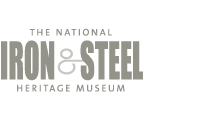1810s-1830s: Inventors and entrepreneurs make suggestions about building model railways in the United States; In 1825 John Stevens (inventor) builds a test track and runs a locomotive around at his summer home estate, Hoboken, New Jersey.
1820s and 1830s: The Baltimore and Ohio is incorporated in 1827 and officially opens in 1830. 21 Other railroads soon follow, including the Camden and Amboy by 1832.
August 8, 1829: The Stourbridge Lion, first steam locomotive in the US, is tested along tracks built by the Delaware and Hudson company in Northeastern PA.
1830s-1860s: Enormous railway building booms in the United States. Railroads replace canals as a primary mode of transportation.
1853: Indianapolis’ Union Station, the first “Union Station” in the world, opened by the Terre Haute & Richmond, Madison & Indianapolis, and Bellefontaine railroads.
1854: The first Bessemer Iron operation opens in the U.S. at the Eureka Iron Works in Wyandotte, Michigan.
1865: George Pullman becomes well known for luxury sleeping cars, called Pullman cars in his honor, after he loans one of his cars to carry the coffin of Abraham Lincoln after Lincoln’s assassination.
April 4, 1869: Union Pacific and Central Pacific complete first transcontinental railway link at Promontory Summit.
1869: George Westinghouse establishes air brake company.


